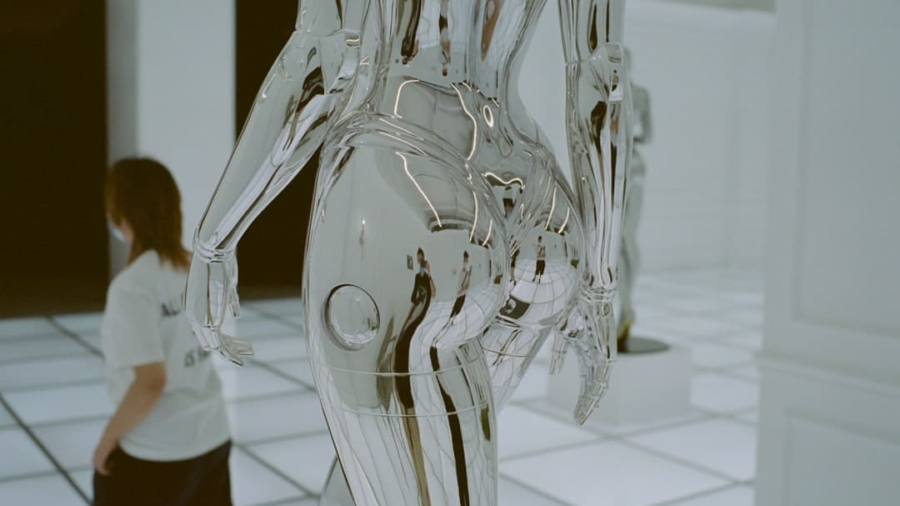Exoskeletons are innovative wearable devices designed to augment human capabilities by providing external support to the body. These devices can be classified into two primary categories: passive and active exoskeletons. Passive exoskeletons rely on mechanical structures that assist movement without any powered components, often using springs or elastic materials to store and release energy.
In contrast, active exoskeletons incorporate motors and sensors to actively assist the user’s movements, adapting in real-time to their actions. This technology has evolved significantly over the past few decades, driven by advancements in robotics, materials science, and biomechanics. The concept of exoskeletons is not entirely new; it has roots in science fiction and military applications.
However, recent developments have made them more accessible for various applications, including rehabilitation, industrial work, and even recreational activities. The design of exoskeletons often mimics the human skeletal structure, allowing for a natural range of motion while providing additional strength and support. As researchers continue to explore the potential of these devices, the possibilities for enhancing human performance seem boundless.
Key Takeaways
- Exoskeletons are wearable robotic devices designed to enhance human strength and endurance.
- Exoskeletons can improve mobility and aid in rehabilitation for individuals with physical disabilities.
- In the workplace, exoskeletons can improve safety and productivity by reducing the risk of injury and fatigue.
- The future of exoskeleton technology holds potential for further advancements in various fields, including healthcare and industry.
- Despite their benefits, exoskeletons also present challenges and limitations, as well as ethical considerations in their use, particularly in sports and recreation.
How Exoskeletons Enhance Human Strength and Endurance
Exoskeletons are engineered to amplify human strength and endurance through a combination of mechanical assistance and ergonomic design. By redistributing weight and providing support to key muscle groups, these devices enable users to perform tasks that would otherwise be physically taxing or impossible. For instance, in industrial settings, workers equipped with exoskeletons can lift heavy objects with significantly less effort, reducing the risk of injury and fatigue.
This enhancement is particularly beneficial in environments where repetitive lifting or prolonged standing is common, as it allows workers to maintain productivity without succumbing to physical strain. Moreover, the integration of sensors in active exoskeletons allows for real-time feedback and adjustment based on the user’s movements. This adaptability not only enhances strength but also improves endurance by minimizing energy expenditure during physical tasks.
For example, a construction worker wearing an active exoskeleton may find that they can lift materials for extended periods without experiencing the usual fatigue associated with manual labor. This capability not only boosts individual performance but also contributes to overall efficiency in work environments.
The Impact of Exoskeletons on Mobility and Rehabilitation

Exoskeletons have shown remarkable promise in the field of mobility enhancement and rehabilitation, particularly for individuals with mobility impairments due to injury or neurological conditions.
For instance, individuals recovering from spinal cord injuries have benefited from exoskeletons that enable them to stand and walk again, offering a sense of independence that was previously thought unattainable.
In rehabilitation settings, exoskeletons are used as part of physical therapy programs to facilitate movement and improve muscle strength. By allowing patients to engage in repetitive motion exercises with the assistance of an exoskeleton, therapists can help them rebuild muscle memory and coordination more effectively than traditional methods alone. Research has demonstrated that patients using exoskeletons during rehabilitation often experience faster recovery times and improved outcomes compared to those who do not use such devices.
This transformative impact on mobility not only enhances physical capabilities but also contributes positively to mental well-being by fostering a sense of agency and accomplishment.
Exoskeletons in the Workplace: Improving Safety and Productivity
The integration of exoskeleton technology into the workplace has the potential to revolutionize industries that rely heavily on manual labor.
For example, in manufacturing environments where workers frequently lift heavy components, exoskeletons can provide crucial support, allowing employees to perform their duties with less risk of musculoskeletal disorders.
In addition to enhancing safety, exoskeletons can also improve productivity levels. Workers equipped with these devices can complete tasks more efficiently due to reduced fatigue and increased strength. A study conducted in a warehouse setting found that employees using exoskeletons were able to lift heavier loads over longer periods without experiencing the same level of exhaustion as their unassisted counterparts.
This increase in productivity not only benefits individual workers but also contributes to overall operational efficiency for businesses, making a compelling case for the adoption of exoskeleton technology across various sectors.
The Future of Exoskeleton Technology
As technology continues to advance at a rapid pace, the future of exoskeletons appears promising. Researchers are exploring new materials and designs that could make these devices lighter, more comfortable, and more efficient. Innovations such as soft robotics are paving the way for exoskeletons that can conform more closely to the human body, providing enhanced mobility without sacrificing support.
Additionally, advancements in battery technology may lead to longer-lasting power sources for active exoskeletons, allowing users to engage in extended activities without interruption. Moreover, the potential applications of exoskeleton technology are expanding beyond traditional realms. Future developments may see exoskeletons being utilized in everyday life for tasks such as carrying groceries or assisting elderly individuals with mobility challenges.
The integration of artificial intelligence could further enhance these devices by enabling them to learn from user movements and adapt accordingly, creating a more intuitive experience. As research continues and public interest grows, it is likely that we will see an increasing number of innovative applications for exoskeleton technology in various aspects of life.
Challenges and Limitations of Exoskeletons

Despite their potential benefits, exoskeletons face several challenges and limitations that must be addressed before widespread adoption can occur. One significant hurdle is the cost associated with developing and manufacturing these devices. High-quality active exoskeletons can be prohibitively expensive, limiting access for individuals who could benefit from them most, such as those in rehabilitation or low-wage workers in physically demanding jobs.
As technology advances and production methods improve, there is hope that costs will decrease over time. Another challenge lies in the complexity of user adaptation. While some individuals may quickly acclimate to using an exoskeleton, others may struggle with coordination or find it uncomfortable.
The learning curve associated with operating these devices can vary significantly among users, necessitating comprehensive training programs to ensure effective use. Additionally, there are concerns regarding the long-term effects of relying on exoskeletons for mobility or strength enhancement; over-dependence on such devices could potentially lead to muscle atrophy or decreased physical fitness if not used judiciously.
Ethical Considerations of Exoskeleton Use
The rise of exoskeleton technology brings forth a host of ethical considerations that warrant careful examination. One primary concern revolves around equity and access; as previously mentioned, the high cost of advanced exoskeletons may create disparities between those who can afford them and those who cannot. This raises questions about fairness in access to technology that could significantly enhance quality of life or job performance.
Furthermore, there are ethical implications related to workplace safety and employee autonomy. While exoskeletons can reduce physical strain and injury risk, there is a potential for employers to exploit this technology by pushing workers beyond their limits under the assumption that they are now “safer.” This could lead to increased workloads or unrealistic expectations regarding productivity. It is essential for organizations implementing exoskeleton technology to prioritize worker well-being and ensure that safety measures are maintained alongside productivity goals.
The Role of Exoskeletons in Sports and Recreation
Exoskeleton technology is beginning to make its mark in the realm of sports and recreation as well. Athletes are exploring how these devices can enhance performance by providing additional strength or endurance during training sessions or competitions. For instance, some athletes have experimented with lightweight exoskeletons designed to assist with running or cycling, potentially allowing them to achieve new personal bests while minimizing fatigue.
In recreational contexts, exoskeletons can also facilitate participation in sports for individuals with disabilities or mobility challenges. Adaptive sports programs are increasingly incorporating exoskeletal technology to enable participants to engage in activities such as skiing or hiking that may have previously been inaccessible due to physical limitations. This not only promotes inclusivity but also fosters a sense of community among participants who share similar experiences and challenges.
As research continues into the application of exoskeletons in sports, it is likely that we will see even more innovative uses that enhance both performance and accessibility for athletes at all levels.
In the realm of technological advancements aimed at enhancing human capabilities, exoskeletons are making significant strides. These wearable devices are designed to augment human strength and endurance, offering promising applications in various fields such as healthcare, military, and industrial work. A related article that delves into the intersection of technology and human enhancement is How Smartwatches Are Enhancing Connectivity. This article explores how smartwatches, much like exoskeletons, are revolutionizing the way we interact with technology, providing seamless connectivity and improving our daily lives. Both exoskeletons and smartwatches exemplify the potential of wearable technology to transform human performance and connectivity.
FAQs
What is an exoskeleton?
An exoskeleton is a wearable device that is designed to enhance the physical capabilities of the wearer. It is typically worn on the outside of the body and can provide support, strength, and endurance for various tasks.
How does an exoskeleton enhance human performance?
Exoskeletons can enhance human performance by providing additional strength, support, and endurance for physical tasks. They can assist with lifting heavy objects, walking long distances, and performing repetitive movements with reduced fatigue.
What are the potential applications of exoskeleton technology?
Exoskeleton technology has potential applications in various fields, including healthcare, military, construction, manufacturing, and rehabilitation. It can be used to assist individuals with physical disabilities, enhance the capabilities of soldiers, and improve productivity in industrial settings.
Are there any limitations to exoskeleton technology?
Some limitations of exoskeleton technology include cost, weight, and complexity. Additionally, exoskeletons may not be suitable for all individuals, and further research is needed to optimize their design and functionality.
What are the current developments in exoskeleton technology?
Current developments in exoskeleton technology include advancements in lightweight and ergonomic designs, improved control systems, and integration with artificial intelligence. Researchers are also exploring the potential for exoskeletons to enhance cognitive performance in addition to physical capabilities.

